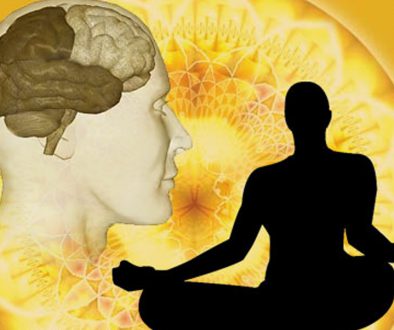FAQs on Yoga Therapy
What is yoga therapy ?
Yoga is and always has been a holistic healing discipline that offers a broad range of tools for supporting health, healing and personal transformation. One of the key advantages of a system like yoga is that it views the human system as a holistic entity that is made up different dimensions (physical body, breath, mind, personality traits, and emotions) that are mutually dependent on and mutually influence one another.
Though yoga is today associated mostly with postures, it is just one of the many tools that yoga has to offer. Some of the most profound tools that yoga offers include: conscious breath regulation, meditative practices, visualizations, use of vocal sounds, life style changes and dietary recommendations among many others. This makes the healing process very comprehensive and extremely specific to the individual.
What are the Benefits of Yoga Therapy ?
Since the practice of Yoga is modified to suit the individual, the person does not need to meet any requirements of fitness, age, or health in order to start a Yoga programme. Almost everyone would benefit from Yoga regardless of his or her medical condition.
What makes Yoga so beneficial is its ability to affect all levels of the human system. By practicing Yoga the student not only feels better, but also gains a way to actively participate in the care of his or her own health. Common benefits experienced by many students include, improvement in quality of sleep, elimination of pain, and reduction in stress. Medically speaking, we are instructing our students on how to support the functioning of their parasympathetic nervous system, which in turn supports homeostasis and healing.
Benefits of practicing Yoga may include, but are not limited to:
Quality of Life
Eliminate insomnia, Improve quality of sleep, Promote relaxation, Improve quality of relationships, Assist with weight loss, Promote healthy food habits (less emphasis on sugar, caffeine), Promote healthy life habits (decrease craving for alcohol, smoking).
Physical
Decrease pain, Increase ease of breathing, Improve ease of movement, Improve joint mobility, Decrease risk of falls, Improve spine / joint stability, Increase strength and flexibility.
Physiological
Increase circulation (especially peripheral), Improve digestion, Improve immunity, Increase distal sensation, Increase amount of O2 in blood, Regulate heart rate, Regulate blood pressure, Regulate respiratory rate.
Psychological
Increase emotional stability, Increase confidence, Reduce depression, Reduce panic attacks and anxiety, Reduce fear, Increase level of alertness and sharpness of mind, Acceptance of limitations.
Other Benefits
- Reducing pain and discomfort, overcoming physical or emotional trauma, and recovering from illness, injury, addiction, or other health concerns.
- Maintaining current health and well being, preventing illness or injury, and increasing flexibility and strength including preparing for, or complementing an existing health maintenance or fitness program.
- Reducing stress, overcoming depression, anxiety, and psychological trauma, and helping to manage and deal with life-threatening illness.
- Personal and/or spiritual growth. In the case of spiritual growth, we feel it is important to note that the course followed would be initiated by the student’s own interest and complimentary to the student’s personal spiritual practices, beliefs, and preferences
What does Om mean?
Om is a mantra, or vibration, that is traditionally chanted at the beginning and end of yoga sessions. It is said to be the sound of the universe. What does that mean?
Somehow the ancient yogis knew what scientists today are telling us—that the entire universe is moving. Nothing is ever solid or still. Everything that exists pulsates, creating a rhythmic vibration that the ancient yogis acknowledged with the sound of Om. We may not always be aware of this sound in our daily lives, but we can hear it in the rustling of the autumn leaves, the waves on the shore, the inside of a seashell.
Chanting Om allows us to recognize our experience as a reflection of how the whole universe moves—the setting sun, the rising moon, the ebb and flow of the tides, the beating of our hearts. As we chant Om, it takes us for a ride on this universal movement, through our breath, our awareness, and our physical energy, and we begin to sense a bigger connection that is both uplifting and soothing.
Do I have to be vegetarian to practice yoga?
The first principle of yoga philosophy is ahimsa, which means non-harming to self and others. Some people interpret this to include not eating animal products. There is debate about this in the yoga community – we believe that it is a personal decision that everyone has to make for themselves. If you are considering becoming a vegetarian, be sure to take into account your personal health issues as well how your choices will affect those with whom you live. Being a vegetarian should not be something that you impose on others – that kind of aggressive action in itself is not an expression of ahimsa.
How many times per week should I practice?
Yoga is amazing – even if you only practice for one hour a week, you will experience the benefits of the practice. If you can do more than that, you will certainly experience more benefits. I suggest starting with two or three times a week, for an hour or an hour and a half each time. If you can only do 20 minutes per session, that’s fine too. Don’t let time constraints or unrealistic goals be an obstacle – do what you can and don’t worry about it. You will likely find that after awhile your desire to practice expands naturally and you will find yourself doing more and more.
How is yoga different from stretching or other kinds of fitness?
Unlike stretching or fitness, yoga is more than just physical postures. Patanjali’s eight-fold path illustrates how the physical practice is just one aspect of yoga. Even within the physical practice, yoga is unique because we connect the movement of the body and the fluctuations of the mind to the rhythm of our breath. Connecting the mind, body, and breath helps us to direct our attention inward. Through this process of inward attention, we learn to recognize our habitual thought patterns without labeling them, judging them, or trying to change them. We become more aware of our experiences from moment to moment. The awareness that we cultivate is what makes yoga a practice, rather than a task or a goal to be completed. Your body will most likely become much more flexible by doing yoga, and so will your mind.
Is yoga a religion?
Yoga is not a religion. It is a philosophy that began in India an estimated 5,000 years ago. These scriptures provide a framework for spiritual growth and mastery over the physical and mental body. Yoga sometimes interweaves other philosophies such as Hinduism or Buddhism, but it is not necessary to study those paths in order to practice or study yoga. It is also not necessary to surrender your own religious beliefs to practice yoga.
I’m not flexible can I do yoga?
Yes! You are a perfect candidate for yoga. Many people think that they need to be flexible to begin yoga, but that’s a little bit like thinking that you need to be able to play tennis in order to take tennis lessons. Come as you are and you will find that yoga practice will help you become more flexible.
This newfound agility will be balanced by strength, coordination, and enhanced cardiovascular health, as well as a sense of physical confidence and overall well-being.
What do I need to begin?
All you really need to begin practicing yoga is your body, your mind, and a bit of curiosity. But it is also helpful to have a pair of sweat pants, leggings, or shorts, and a t-shirt that’s not too baggy. No special footgear is required because you will be barefoot. It’s nice to bring a towel to class with you. As your practice develops you might want to buy your own yoga mat, but most studios will have mats and other props available for you.
Why are you supposed to refrain from eating two to three hours before class?
In yoga practice we twist from side to side, turn upside down, and bend forward and backward. If you have not fully digested your last meal, it will make itself known to you in ways that are not comfortable. If you are a person with a fast-acting digestive system and are afraid you might get hungry or feel weak during yoga class, experiment with a light snack such as yogurt, a few nuts, or juice about 30 minutes to an hour before class.



